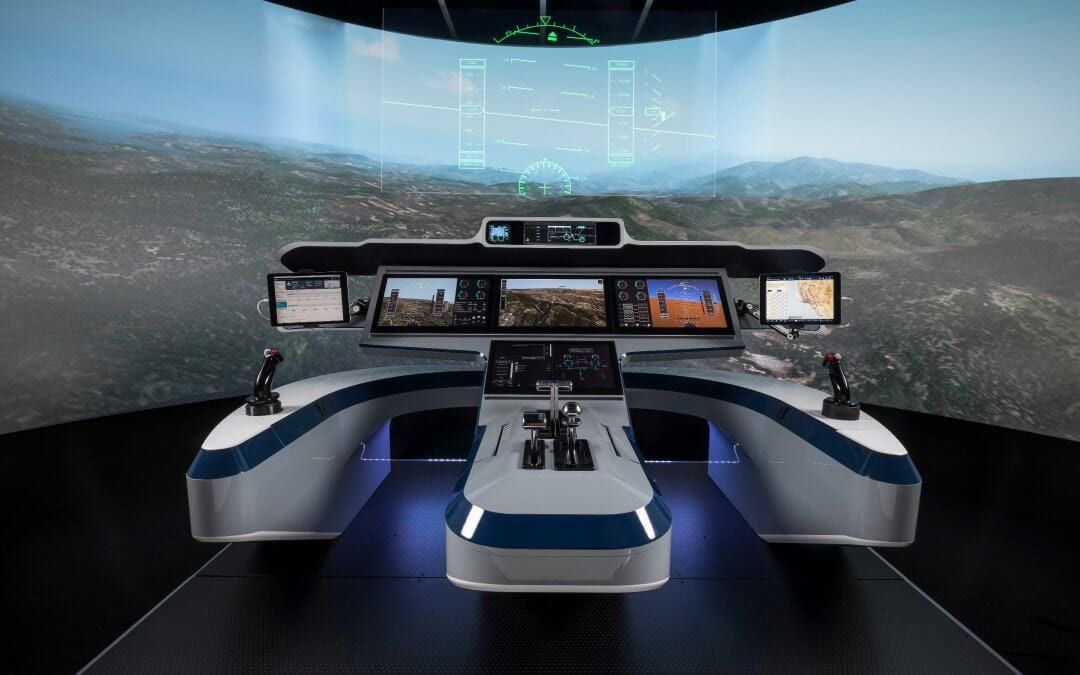If an airline or OEM wants to change just one line of code in a critical aircraft system today, it would cost millions of dollars and take months, even years to complete. What if, instead, critical aircraft system functionality could be rapidly updated with new features, similar to the way Apple updates iPhone applications?
Avionics caught up with GE Aviation ahead of the 2018 Farnborough International Air Show to discuss the company’s vision for rapidly evolving, open-system avionics, which it will be demonstrating at the show.
The demonstration is an expansion of the Common Core System (CCS) avionics architecture featured on the Boeing 787 and Gulfstream’s G500 and G600 business jets. CCS uses a network of remote data concentrators to harmonize data from aircraft systems and sensors and then distribute it through a full-duplex switched Ethernet network. CCS is also supported by the VxWorks 653 real-time operating system (RTOS) from Wind River.
On the G500 and G600, the aircraft’s data concentration network can host coding and facilitate computer language transition. The remote data concentrators allow the OEM to take many different systems and connect them to the network, regardless of the systems’ native languages, because a translate functionality can be built into the data concentration network itself.
Now GE is looking to expand this open-systems approach beyond the embedded aircraft network to the flight management system (FMS) and flight deck, according to Andrew Carlisle, an avionics global sales executive for GE Aviation.
“The best analogy I can provide is the Apple iPhone, where we get regular updates to the applications that we use,” Carlisle told Avionics. “There is a strong call in both the commercial and military marketplace to provide updates to aircraft functionality in this way. The only way you can adopt those changes and get that done with speed and in a cost affordable way is through software-enabled features.”
One of the key enablers to enabling a more advanced, open-architecture approach to flight management computers is the use of common standards, Carlisle said. Establishing the open-systems avionics demonstrator required the use of ARINC 664 part 7, or the avionics full-duplexed switched ethernet (AFDX) standard that first entered service on the Airbus A380. Additionally, the software architecture on the system features ARINC 661 part 2, which allows customization of cockpit display widgets.
The open-systems demonstrator will also show airline and military pilots and OEMs how GE is enabling more interaction between electronic flight bags (EFBs) and the FMS. The demonstrator shows how a pilot can optimize route planning by taking the route they have selected on the EFB and deploying it directly into the aircraft flight plan through the FMS. This is similar to what Garmin has enabled in some general aviation aircraft with its Flight Stream 510 Multimedia Card (MMC). The 510 card gives operators the ability to wirelessly update the aircraft’s numerous databases and can also facilitate the exchange of flight information to and from the Garmin Pilot app and the panel-mount avionics.
“We’re running real, live software code at Farnborough showing how this can be enabled,” Carlisle said.
The open-systems approach to the flight deck will allow third-party vendors to host applications on the GE’s network. This is already a reality today on the 787, which currently hosts 80 different applications from 60 different vendors on the CCS.
“We want to show the art of the possible,” said Carlisle. “Through this open-systems approach, we’re giving OEMs a blank canvas, an open platform that you can build and customize your flight deck upon.”
GE Aviation is exhibiting at the Farnborough Air Show in Chalet P2.
Source: Aviation Today

